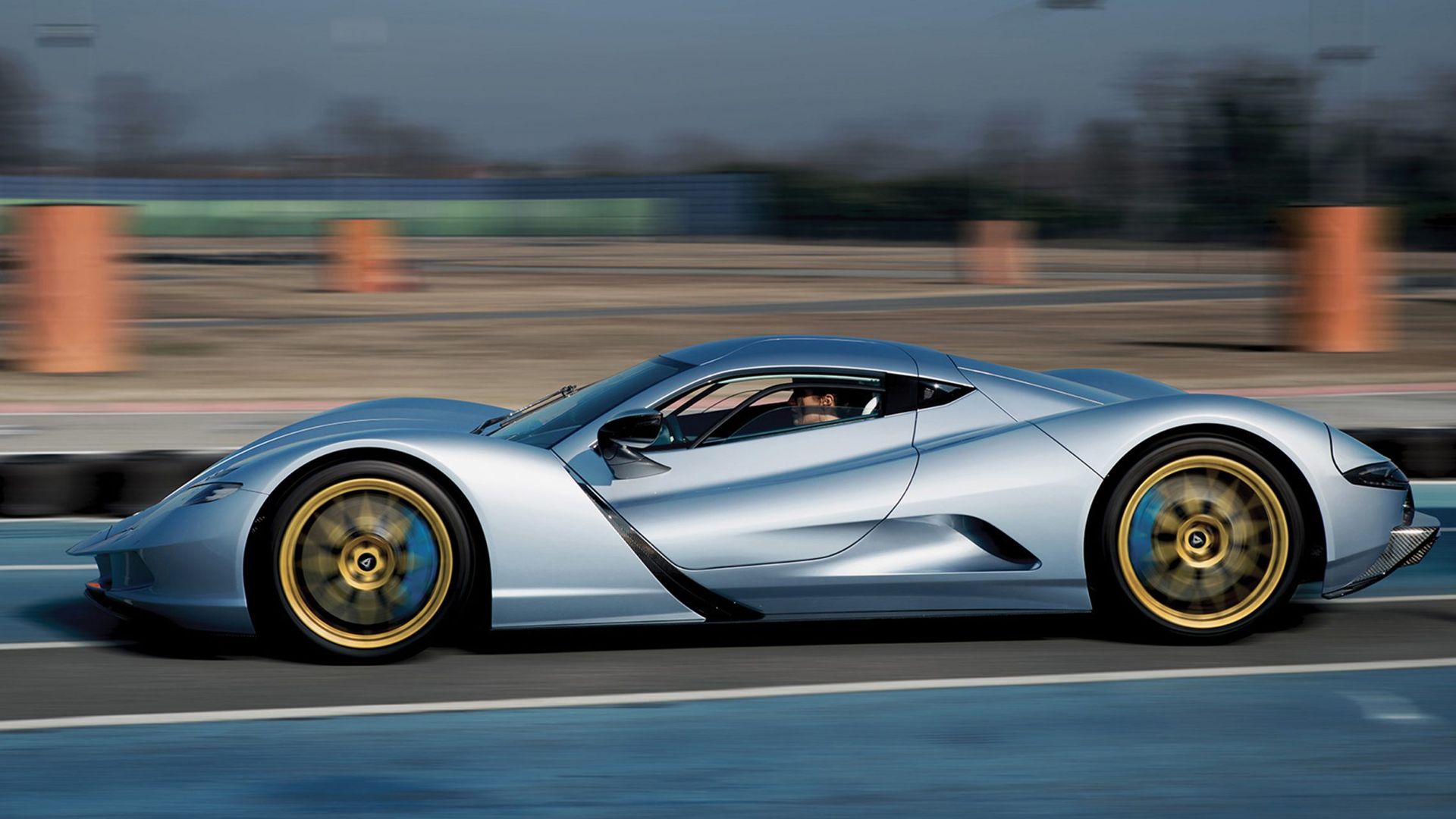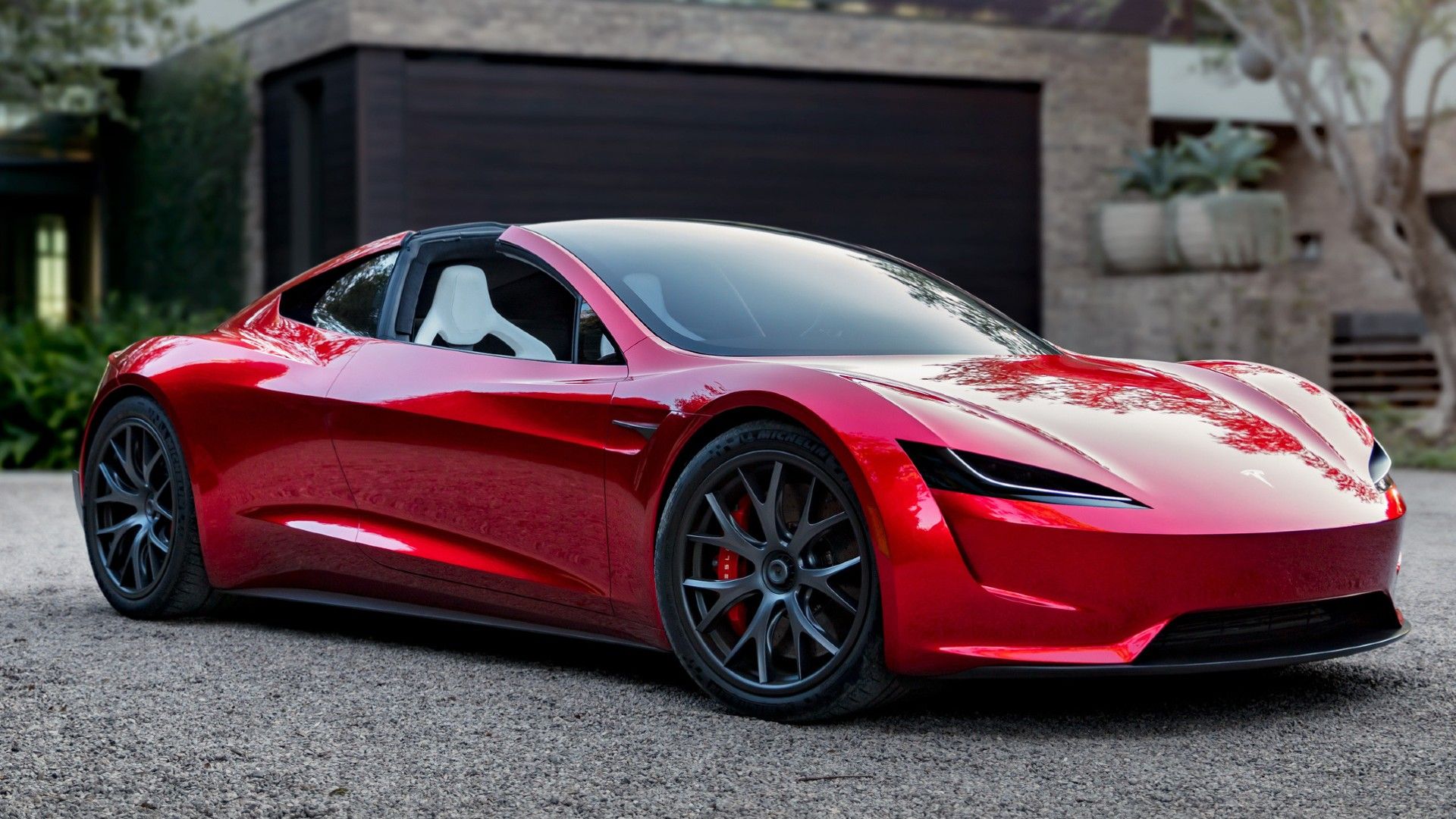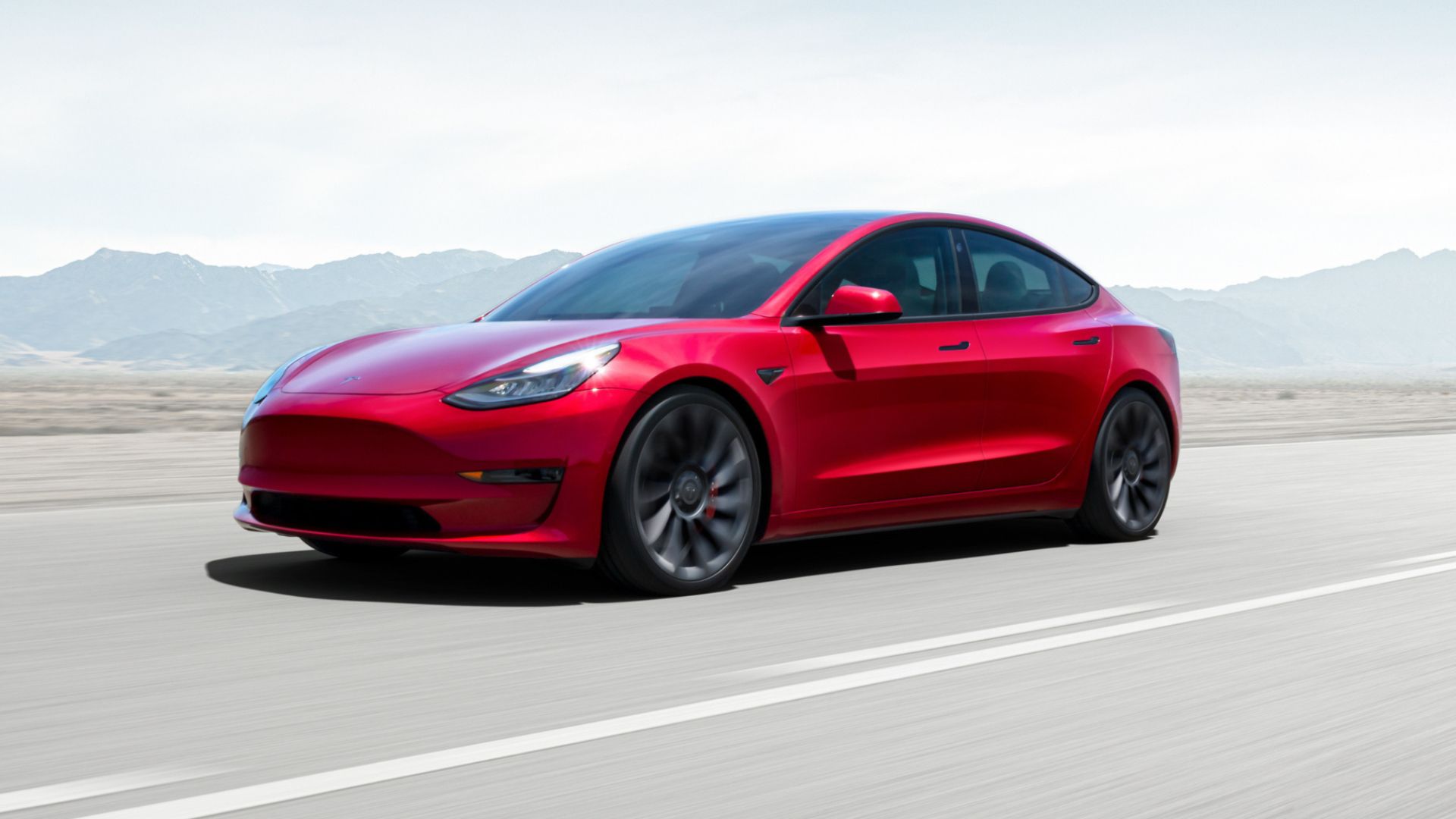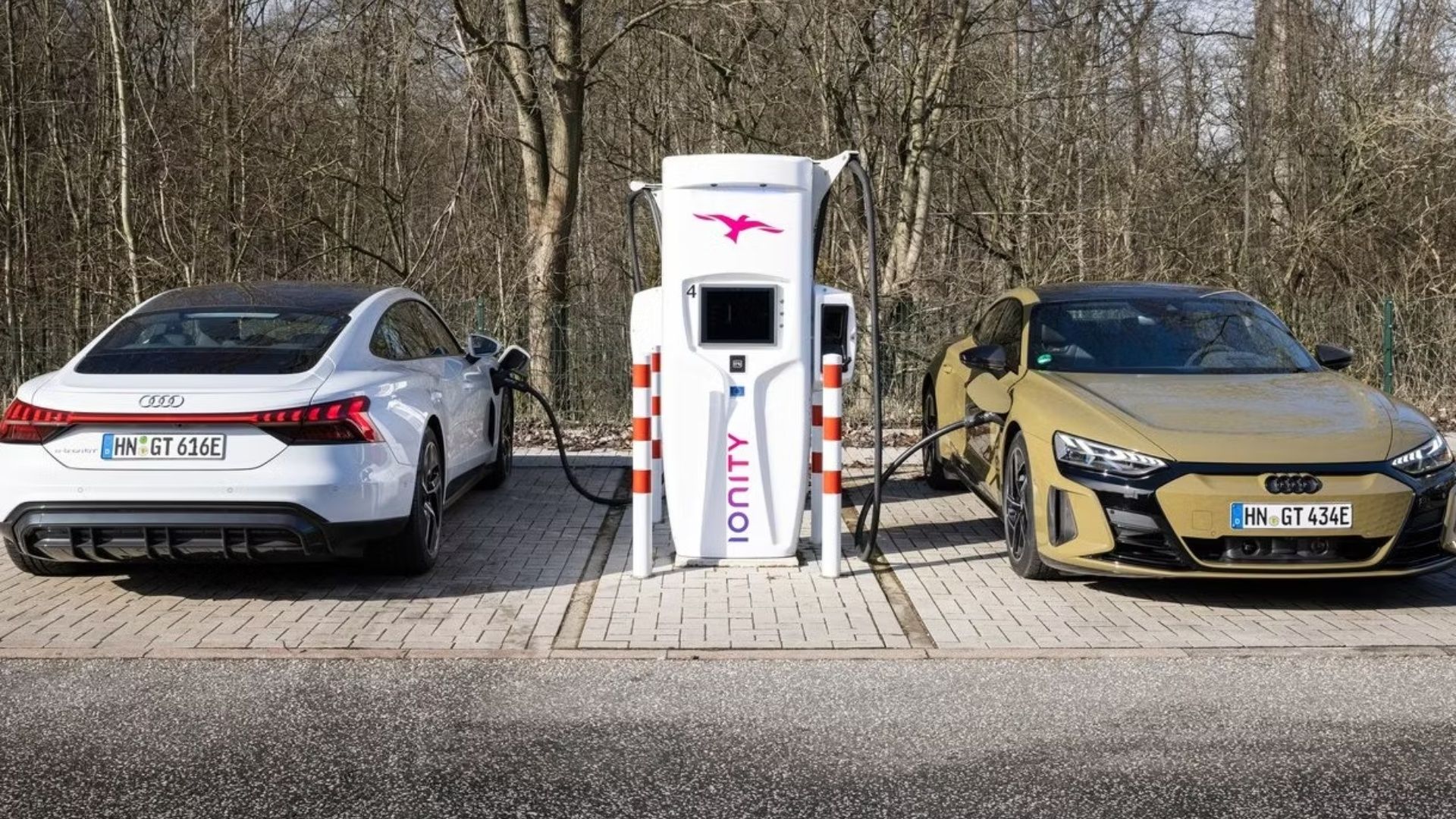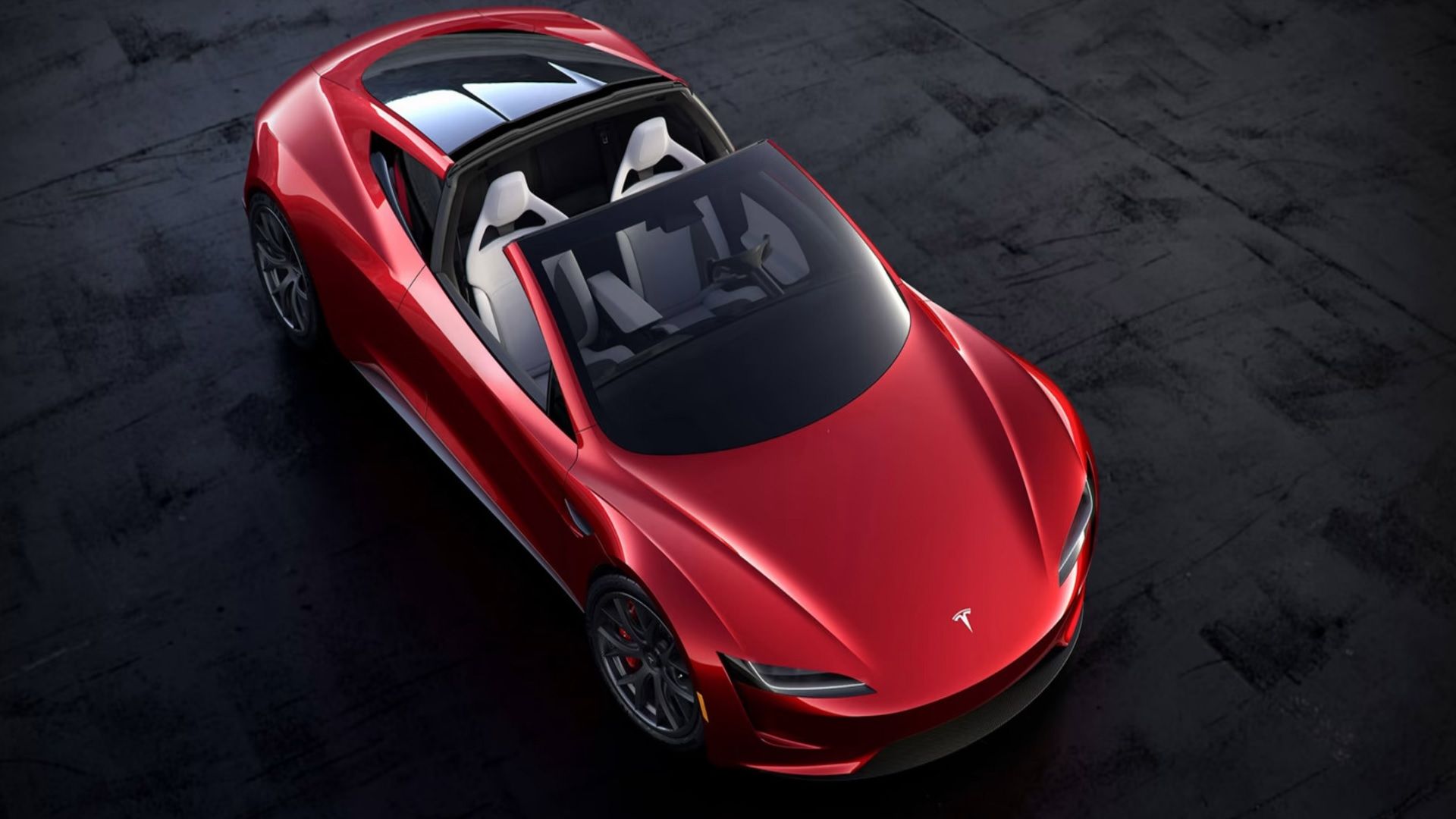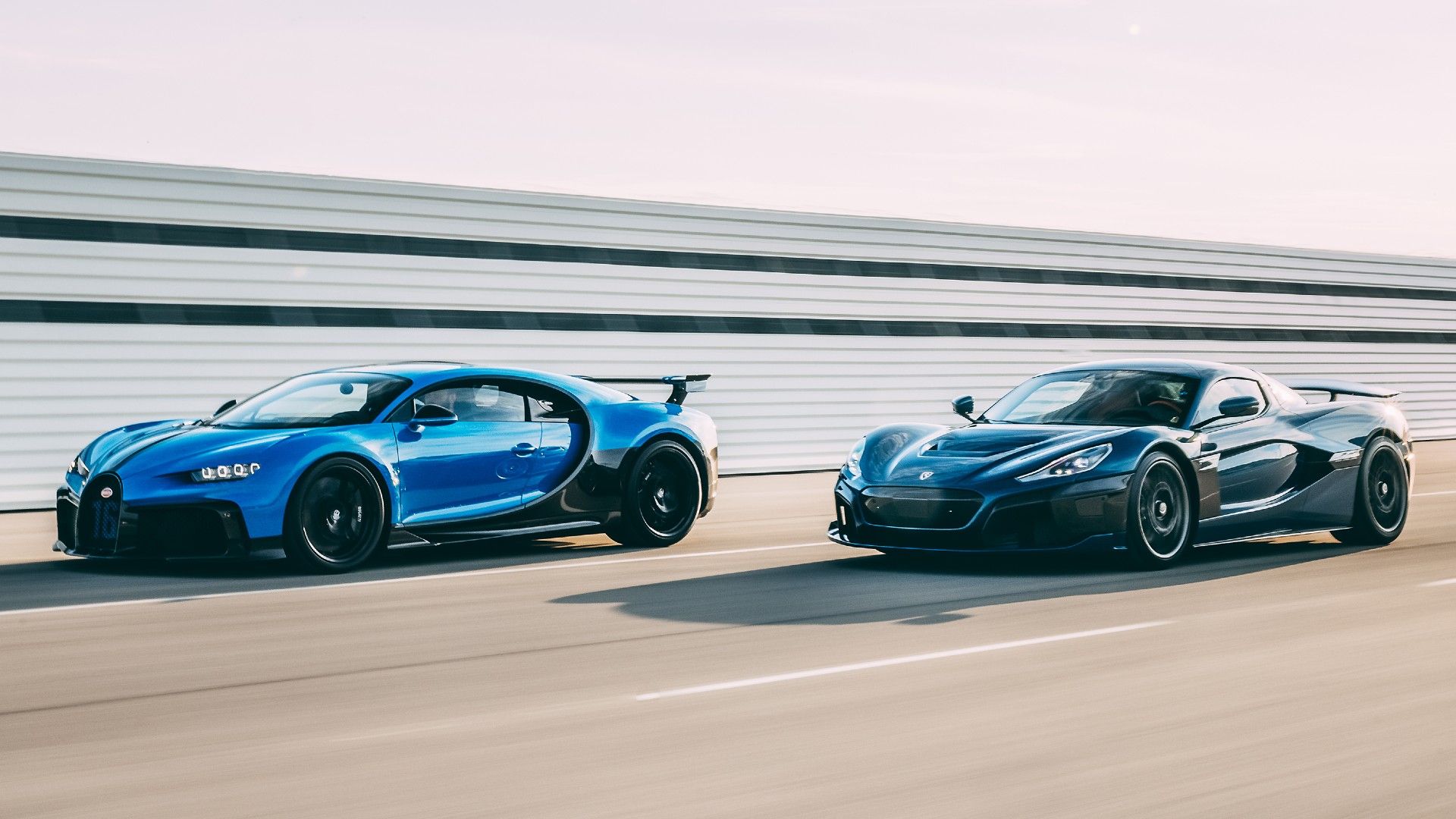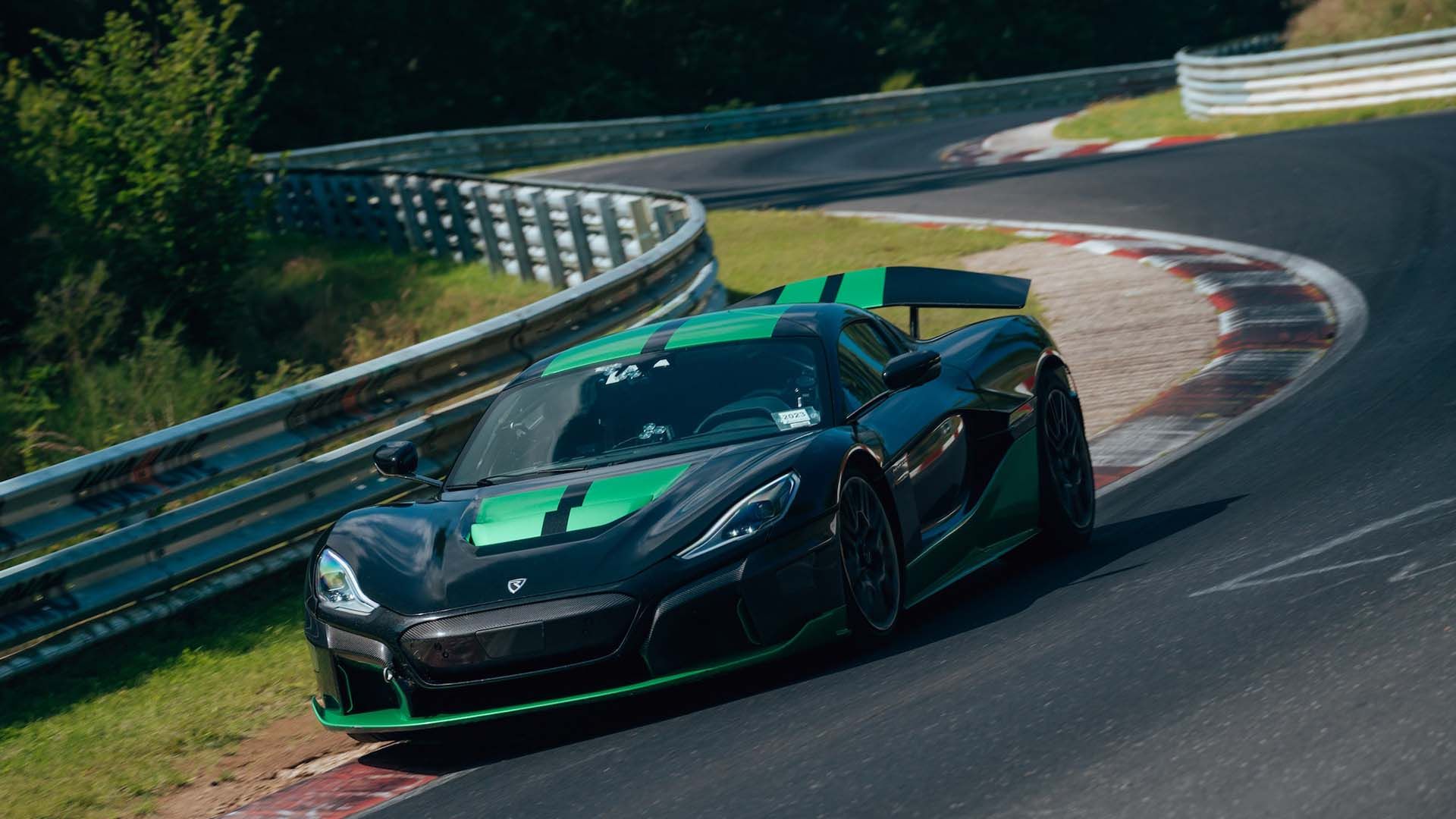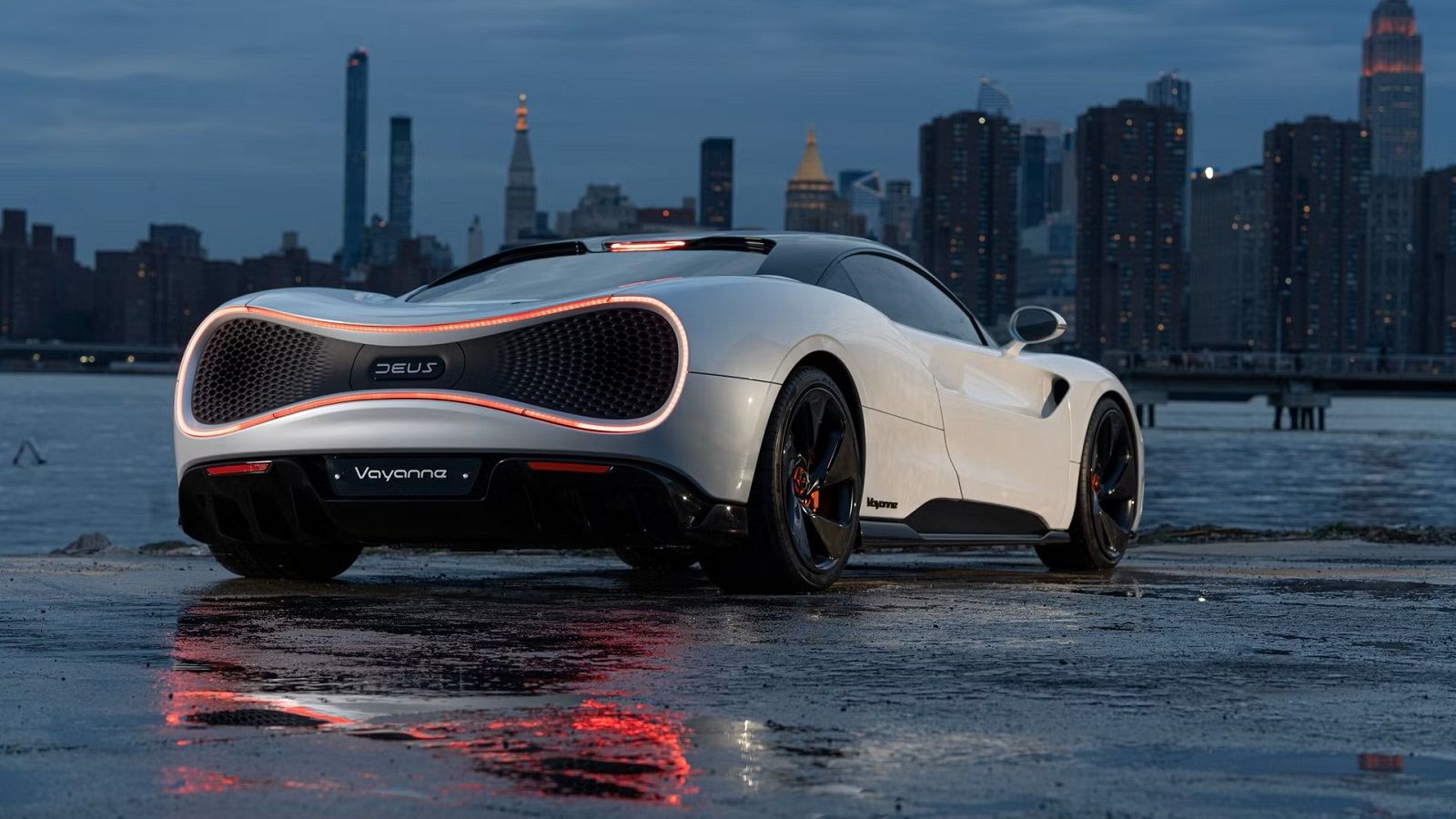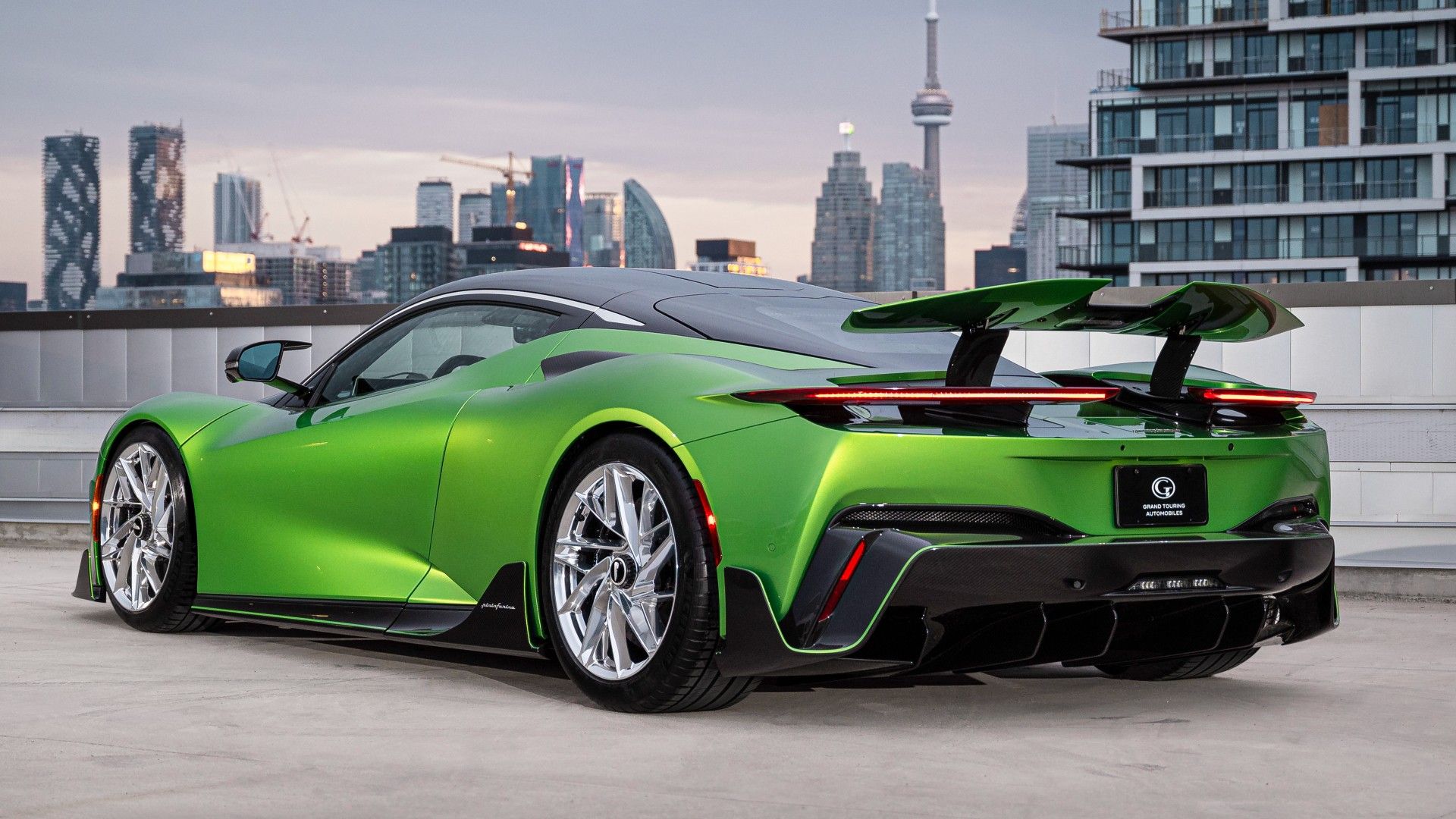Summary
- Electric sports cars offer instant torque for a zero-lag launch, providing an exhilarating rush that traditional gas-powered cars can’t match.
- Electric sports cars have simpler architecture with fewer mechanical components, resulting in a lack of conventional gearbox. This enhances acceleration, reduces weight, and lowers production costs.
- While electric sports cars may offer a quieter and smoother ride, they still deliver the same kick and thrill at higher speeds as their gasoline counterparts. They may not reach the top speeds of combustion engines but are catching up with advancements in technology and aerodynamics.
To truly grasp the essence of driving a sports car, you must dive deeper than mere numbers and statistics. You could say that driving a racing machine is an audacious experience, almost a rite of passage for the automotive enthusiast. There’s an unexplainable sense of anticipation as you settle into that anatomical seat with your hand naturally aligned with the precision-crafted steering wheel. From that roar of the engine (the most beautiful sound in the world for many) to the instant response and agile maneuverability, a sports car is all about feeling alive. But is the experience or the emotions the same when you drive an electric sports car?
It’s a genuine question many gasoline-powered sports car purists ask because these traditional gas-guzzlers are slowly dying out. After all, the future of sports cars is, well and truly, electric. And it’s not just that ICE sports cars have lost their appeal or enthralling performance. It’s simply that the inevitability surrounding the electric future is too strong to refute. Automakers understand that they can either embrace this change or be left behind in the annals of history. We have the prime example of Lotus making a grand exit with the Emira, the one last true sports car.
1 Different: You Will Get The Instant Torque That Defies Traditional Limits
Electric sports cars are fundamentally designed differently from their gasoline counterparts, and this distinction is paramount when discussing torque. Unlike traditional speed beasts relying on an internal combustion engine, electric sports cars harness their power directly from electric motors, ensuring immediate torque availability from the very beginning. This means no time is wasted waiting for the engine to rev up. The result? A zero-lag launch that offers drivers an exhilarating rush — an experience only electric sports cars can deliver.
This immediate access to such raw power is due, in part, to the simpler architecture of electric powertrain. It possesses fewer mechanical components and moving parts, while electric motors power the wheel axles (front and rear) directly to guarantee optimal instant torque delivery to each wheel. This engineering excellence leads to astonishing acceleration rates. A prime example is the Aspark Owl, which delivers an astounding 2,000 horsepower and 1,475 pound-feet of torque, enabling this Japanese full-electric hypercar to achieve 0 to 60 mph in “just” 1.69 seconds. In contrast, the record-breaking Bugatti Chiron Super Sport 300 (the fastest production car in the world) delivers 1,578 horsepower and 1,180 pound-feet of torque, taking 2.6 seconds to reach 60 mph from a standstill.
2 Different: Lack Of A Conventional Gearbox Will Be A New Thing For You
If you’ve never had the experience of driving an EV, transitioning directly to the cockpit of an electric sports car may catch you off-guard. Immediately, you’ll notice the absence of a familiar companion: the gear shifter. For the first several drives, your muscle memory might even make your hand instinctively reach for it. But this missing gear lever isn’t an oversight; it’s by design. A vast majority of electric sports cars are equipped with a single-speed transmission, a departure from the multi-speed gearboxes commonly found in traditional gasoline-powered vehicles.
This is because electric motors deliver consistent torque over a broad range of speeds. It means that, unlike traditional gasoline engines, they don’t require multiple gears to maintain optimal power and performance. This makes acceleration in an electric sports car smooth, powerful, and uninterrupted. Furthermore, integrating a multi-speed gearbox isn’t just about maintaining traditions; it introduces complexity. More parts often mean increased weight, greater potential for wear and tear, and more places where energy can be lost to friction. And from a manufacturing perspective, a complex gearbox means higher production costs.
3 Different: Quieter Cabin Will Change Your Driving Experience
The growl of a sports car speaks of sheer power, performance, and legacy that gets an enthusiast’s heart racing. But when you move to an electric sports car, a far smoother and quieter (or you could say a less aggressive-sounding) ride presents a different auditory experience. Those in love with the thrill-inducing sound of an engine may argue that driving an electric sports car is like listening to a concert with the main instrument muted.
That’s why some EV manufacturers like Tesla, Audi, and Porsche have added amplified engine roar features after drivers’ feedback about the EV cabin being way too quiet. It’s understandable that driving an electric sports car does come with its set of adjustments, but it promises a tranquil driving experience. Plus, there’s an added benefit: You wouldn’t be exposing yourself to ear-damaging sounds above 85 dB.
4 Different: Exceptional Handling Dynamics Due To Lower Center Of Gravity
You’ll notice that an electric sports car offers far superior handling than its gasoline counterparts. A prime reason behind this edge is the strategic placement of the batteries: typically low and centered, often embedded within the vehicle’s floor. This strategic engineering choice grants the EV a lower center of gravity, leading to enhanced stability, reduced body roll when cornering, and, ultimately, a more responsive and agile driving experience.
Another factor to consider is weight distribution. While electric sports cars might be heavier due to their substantial batteries, this weight is strategically distributed to their advantage. For example, the Tesla Model S has a nearly perfect 50/50 weight distribution. Additionally, the drivetrains in these electric marvels facilitate advanced traction and stability control features. In some of the fastest electric cars, individual motors are designated for each wheel, ensuring precise torque distribution. This guarantees optimal road grip and superior control during spirited driving sessions.
5 Different: You’ll Be Spending Time Charging It Instead Of A Quick Refuel
One of the major differences you’ll notice when driving a sports electric car is the way you power it up. While refueling an ICE sports car doesn’t take much time, charging a sports electric car can vary from minutes to hours, depending on the charger type. However, we’ve witnessed some of the most significant advancements in EV charging technology in the past decade. For instance, the Porsche Taycan is the world’s first EV to boast an 800-volt charging system, enabling it to recharge from five to 80 percent in just 22.5 minutes.
Similarly, the mighty impressive and powerful Audi RS e-Tron GT takes about 21 minutes to charge from five to 80 percent. Furthermore, the proliferation of charging stations is another positive development, with over 140,000 public EV charging stations across the United States. So, while this difference might seem like a significant inconvenience at first, it’s likely to become less of an issue over time.
6 Different: You’ll Go The Distance With Modern Electric Sports Cars
Generally speaking, gasoline engines have always boasted superior ranges compared to their electric counterparts. Yet, when we bring high-performance vehicles into the equation, the perspective shifts. Sports cars, designed with an emphasis on raw power, often possess robust engines that guzzle fuel and come with a heftier weight – both factors affect their overall range. Although ridiculously low ranges were once a significant concern, today’s electric sports cars are addressing this challenge and boasting remarkable improvements.
For instance, Drako GTE delivers a range of 250 miles on a single charge, the Pininfarina Battista provides a healthy range of 310 miles, and the Rimac Nevera gives 342 miles on a single charge (as per the WLTP ratings). On the other hand, you have the Tesla Model S Plaid effortlessly putting range anxiety to rest. This sports sedan, capable of a blistering 200 mph, shatters perceptions with a commanding 396-mile range. And if you’re thinking that’s the peak, think again.
The Lucid Air Dream Edition Performance, embodying the spirit of a sports car in a sedan’s body, not only boasts a top speed of 168 mph and a 0-60 mph time of just 2.5 seconds but also delivers an enviable 471-mile range on one charge. And we cannot resist the urge to mention the new Tesla Roadster, set to hopefully arrive in 2024. According to the EV maker, the Tesla Roadster 2.0 will dash to 60 mph in just 1.9 seconds and offer a top speed of 250 mph. But what has really caught the eye of everyone is Tesla’s claim that Roadster 2.0 will offer 620-mile range. The exciting part is that these long ranges are delivered by the use of lithium-ion batteries, and they can significantly increase with the use of solid-state batteries in the future.
7 Not Different: Offers The Same ‘Kick’ At Higher Speeds
Electric sports cars can be just as fun to drive as their gasoline counterparts. Curvy roads, straightaways, and corners all offer the same sense of overwhelming excitement. While the power sources differ between electric and gasoline sports cars, both excel in delivering adrenaline-pumping experiences, catering to traditionalists and futurists alike.
For example, the Rimac Nevera employs quad motors to power each wheel with its own electric motor (generating an insane combined output of 1,914 horses and 1,741 pound-feet of torque) to achieve the breathtaking acceleration and thrill typical of traditional sports cars. Beyond the immediate torque advantage, which compensates for their current limitation in reaching the top speeds of combustion engines, electric sports cars are equally adept at providing the same sensory experience, freedom, and kick that sports car enthusiasts crave.
8 Not Different: The Thrill Of Heart-Pounding Top Speed
Although electric sports cars can accelerate faster than their gas-powered counterparts, they are still playing catch-up in top speed contests. However, what they offer right now is still immensely impressive. Take the Rimac Nevera, for example. It’s the current pinnacle of electric speed with a blistering top speed of 258 mph and a 0-60 mph time of 1.85 seconds. A huge feat given how the electric sports car segment is fairly novice. But for argument’s sake, when you place it next to the world’s fastest cars, it doesn’t break into the top 10 list. In fact, there are six supercars out there that can soar beyond the 300 mph mark, and, topping that list is the Koenigsegg Jesko Absolut, proudly boasting a (claimed) top speed of a staggering 330 mph.
The reasons behind electric sports cars’ limitations in top speeds are quite clear. The most obvious is the heavier weight of electric sports cars, primarily due to their bulky lithium-ion batteries. For comparison, the Rimac Nevera weighs 5,100 pounds, while the Jesko Absolut has a curb weight of just 3,064 pounds. Yet, it’s not just about weight. Gas-powered sports cars have had decades of research, design, and track-tested refinements. These cars are sculpted and honed, their exteriors meticulously crafted to pierce the air and maximize downforce, thus unlocking those remarkable top speeds. Nevertheless, we’re witnessing a rise in aerodynamically enhanced and technologically advanced electric sports cars, and it’s reasonable to foresee them surpassing their gasoline equivalents in the near future
9 Not Different: Shortage Of Aesthetic Appeal
One might have expected electric sports cars to initially lag in aesthetics, given the young age of this industry segment. With manufacturers prioritizing factors like acceleration, range, safety, and top speed, a compromise in exterior styling could have been understandable. Yet, impressively, automakers have quickly cracked the code to introduce electric sports cars as captivating as gasoline performance cars. Credit should go to the Tesla Roadster for showing the world back in 2008 that EVs can also possess the flair of a classic sports car.
Today, we have the Porsche Taycan Turbo S, which mesmerizes with its sleek, seductive exterior. And the Deus Vayanne, which brandishes a bold infinity symbol at its rear, showcasing an unmistakably unique design. There’s also the Italian electric hypercar Estrema Fulminea, exuding an exotic charm with facial features echoing the Ferrari 458. Not to be outdone, the Aspark Owl presents a futuristic facade, characterized by harmoniously flowing curves. Put simply, today’s electric sports cars exhibit sleek designs, commanding stances, and captivating allure that are guaranteed to turn heads.
10 Not Different: The Frequent Need For Maintenance
Maintaining traditional combustion-engine sports cars can be a pricey affair, largely attributed to their high-performance engines and unique components. Their ability to achieve high speeds and execute sharp maneuvers places considerable strain on the vehicle, accelerating wear and tear on parts.
On the other hand, electric sports cars generally demand less maintenance. They lack a combustion engine, have fewer moving components, and require fewer fluids. A standout feature in sports electric cars is regenerative braking. This not only saves consumers a considerable amount of money on maintenance costs but also prolongs the life of brake pads and discs. Essentially, it significantly reduces the reliance on traditional braking by using one-pedal driving. This technology turns kinetic energy typically lost during braking into electrical power to replenish the vehicle’s battery.
However, it’s crucial to highlight a specific concern with electric sports cars: their tires tend to wear out about 20 percent faster than those on traditional ICE vehicles. Two main factors contribute to this. First, the immediate torque from electric drivetrains can strain the tires. Second, the hefty batteries in these vehicles add substantial stress to the tires.
